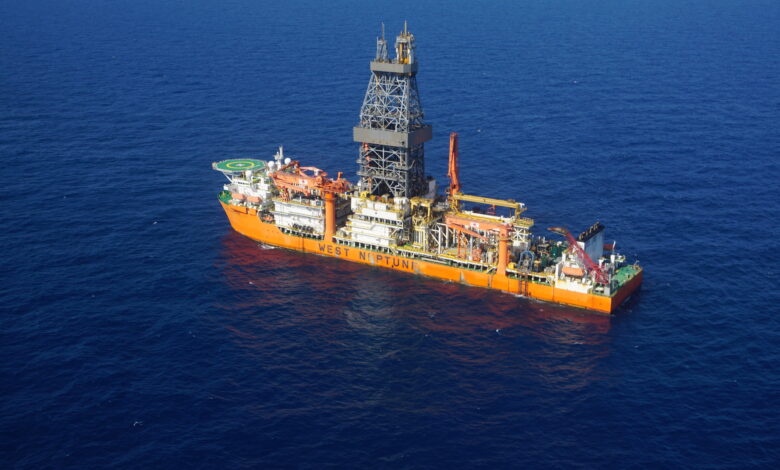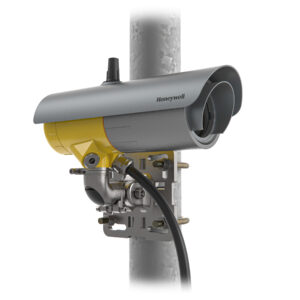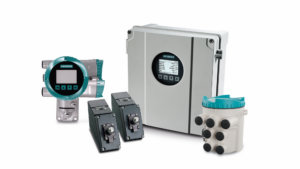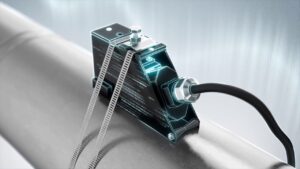Sensor advances enhance data accuracy, drive more automated workflows
Industry finding innovative ways to improve data collection for applications like rig equipment monitoring and flow measurements while prolonging sensor durability in harsh environments

By Stephen Whitfield, Associate Editor
Amid the digitalization boom in drilling, the deployment of accurate and effective sensor technology has become crucial to companies’ efforts to monitor specific operational parameters, whether for equipment maintenance on the rig or as an enabler for increasingly data-dependent automation tools.
“Our drilling automation services fundamentally hinge on robust measurement, interpretation and control systems, all orchestrated to enhance well construction,” said Matthias Gatzen, Well Construction Segment Digital Director at Baker Hughes. “Utilizing the right sensors, whether they’re proprietary sensors that we design or third-party sensors that we select, allow us to collect precise data at the right time and place. That’s essential for marrying practical field operations with the advanced technological solutions we’re seeing more and more of in the industry.”
Sensors also play a valuable role in keeping people safe at the rig site. New systems have been developed, for instance, to better detect harmful gases that could be present on the rig, allowing drillers to quickly investigate and prevent fires or explosions.
“In situations involving hazardous gases, it’s critical for facilities to respond quickly to incidents, from detecting gas leaks as they happen to making informed decisions and mitigating risks wherever possible,” said Jessica Wood, VP and General Manager – Industrial Processing and Safety at Honeywell. “If these leaks are not detected, they could result in devastating injuries. It’s really important for site managers to implement a layered gas detection system in which independent, yet interrelated, layers of protection work together through various technologies, including sensors.”
In this story, DC speaks with sensor manufacturers and an offshore drilling contractor about new sensing technologies and how their boundaries are being tested.
Automating data collection from primary load path drilling equipment
Vibration is one of many types of data Seadrill uses within its Asset Lifecycle Management (ALCM) platform to validate equipment condition and identify when a major overhaul is required. Currently, however, getting that data is a labor-intensive, manual process that can often disrupt the operation of primary load path drilling equipment.
Automating that measurement process will be critical, both in helping to mitigate the potential negative impacts of those disruptions and to improve the ALCM platform, said John Dady, Director of Technical Services at Seadrill. “We need to eliminate the need for unnecessary manual data collection. That’s going to be big in freeing up the rig crew to handle more critical preventative and corrective maintenance tasks.”
To measure vibration specifically, Seadrill has been working with a third-party engineering firm on a proof-of-concept trial of a battery-powered tri-axial vibration sensor. The sensors can be activated to take a sample vibration measurement via an RPM setpoint detection algorithm. The vibration data gathered by the sensors are first sent over a conventional Wi-Fi network to the engineering firm’s cloud computing network for display and status reporting, then to Seadrill’s cloud for analysis within the ALCM platform. As the platform is directly connected to the rig control system, it will automatically send a corrective work order to the driller if it recognizes vibration patterns that align with equipment malfunction, indicating a need to inspect the equipment.
“The sensor has been extensively deployed in other industrial sectors, managing remote sites that necessitate the use of equipment that can handle rigorous daily operations in rough environments, but they have not been used on an offshore rig,” Mr Dady said. “We think that, because they’ve shown durability working in different environments, they’re an ideal choice for offshore since that environment demands robust and dependable equipment.”
The pilot project will be conducted on the West Neptune drillship, which Mr Dady said was selected because of its location. The rig is working in the US Gulf of Mexico, close to the Seadrill’s Houston office. Installation of the sensors on the rig, as well as any necessary ISIT (information systems and information technology) upgrades to support the sensors, is expected to be complete by the end of this year.
However, that time line will depend on Seadrill’s ability to access the primary load path drilling equipment, which includes the drawworks, crown block, traveling block and top drive. This can only be done during maintenance periods when the BOP is brought to the surface between wells and changed out with another BOP.
Once the sensors are installed, the pilot will run for three months, during which time the vibration data gathered from the sensors will be measured against manual measurements. If the sensors prove reliable, Seadrill plans to install them across its rig fleet over the course of 2024.
“The time frame we set for this project should give us an idea of how well the sensors and system as a whole performs,” Mr Dady said. “The sensors are giving us much more data than the manual measurements do, with the major benefit of not having to take time out of service and take the measurements. That said, I believe the biggest benefit is the fact that we won’t need the rig crew to go out and take these measurements anymore, reducing the burden on them.”
Improving sensor material quality
Baker Hughes has multiple brands, including Druck, Panametrics and Reuter-Stokes, devoted to designing sensors for the tools it uses to gather and process data for the monitoring systems its customers use in the oilfield.
Through its Reuter-Stokes division, the company has developed gamma ray sensors that provide greater light output, energy resolution and sensitivity compared with previous models. These sensors, along with third-party sensors, are used to collect and feed data into Baker Hughes’ automation solutions, wireline logging tools and intelligent production systems. They can also aid in directional drilling, which requires powerful detection systems that can withstand high temperatures, shock and vibration.
“Our drilling services require high-precision sensors for a comprehensive understanding of downhole environments and formation characteristics. The better our sensors are, the more we can help our clients optimize their processes, maintain critical margins and see noticeable time and cost savings in their operations,” said Ricardo Tirado, IPS Product Line Director.
As drillers and operators seek to drill deeper, faster wells while achieving precise wellbore placement, the limitations of these sensors have become more apparent. To improve sensor quality, Baker Hughes has looked to improving their material.
Sodium iodide crystals are commonly used in gamma ray sensors. The crystals absorb gamma radiation and emit a burst of light, which is collected and turned into a signal by a photomultiplier tube. The detector’s electronics then grab that signal and store it for transmission. However, sodium iodide gamma sensors increase light loss and slow pulse response times when operating in elevated temperatures.
To combat those limitations, the company developed gamma ray scintillator sensors with lanthanum halide and cerium bromide crystals, materials that have a higher density than sodium iodide. The higher density levels improve the sensitivity and spectral resolution of the sensors, enabling faster data acquisition with more accurate spectroscopic measurements. They also increase the sensor’s life by reducing high-voltage requirements.
Baker Hughes currently offers the crystal combinations in customizable sensor configurations, with different options for crystal size and aspect ratio, optical interfaces design and construction and various mechanical interfaces.
The company noted that, while lanthanum halide offers better light output than cerium bromide and sodium iodide, lanthanum has a naturally occurring radioactive lanthanum isotope close to that of potassium. In certain applications, this can contribute to background radiation. Cerium bromide has less sensitivity than lanthanum halide, but background radiation is not an issue.

Gas detection devices
Different types of gases, such as toxic, combustible or volatile gases, can create hazards for workers on the rig, which means gas detection is a crucial part of the safety regimen on a rig. Early detection helps field personnel find and repair leaks quickly, reducing the risk of major accidents.
The technology for communicating gas hazards has improved over the years, with real-time monitoring now commonly available. In addition, the sensor networks that measure environmental factors are becoming more connected to one another, which helps onsite leaders identify problems sooner. This connectivity is a key feature in a line of gas detection sensing technologies launched by Honeywell in late 2021, the Searchline Excel Plus and Searchline Excel Edge. These open-path gas detectors have improved ability to stay online in adverse weather conditions.
Open path gas detectors are designed to identify the presence of combustible levels of hydrocarbon gases in open areas. They consist of an infrared source that transmits a focused beam of infrared light across an area to be monitored into a detector located some distance away. Gases passing between the transmitter and the detector interfere with the infrared beam, and the detector uses this drop in energy to determine that gas is present – the amount of energy decrease is proportional to the level of gas present.
“Open path gas leak detection creates this invisible line that senses the presence of flammable and toxic gas passing between the transmitter and receiver. With these detectors, we’re utilizing improvements in optical coupling between the transmitter and receiver to help these devices maintain consistent operational uptime at long distances and in tough conditions,” Ms Wood said.
Unlike a conventional point gas detector that measures the amount of gas present in a specific area, an open path detector measures the quantity of gas in an area that covers the distance between the transmitter and receiver. This allows a single open path detector to monitor larger areas than point gas detectors.
Since the open path detector relies on its ability to measure light intensity, harsh weather conditions can affect the visibility of the source light. A standard open path detector uses a non-dispersive infrared light source, which analyzes the concentration of target gases based on their characteristic infrared absorption. These light sources are not filtered, so when the light beam passes through and interacts with the sample gases in a chamber, only a portion of the optical energy is absorbed by the gases at their characteristic absorption wavelength. In harsh weather conditions, where light visibility can be limited, this makes it more difficult to detect the presence of gases.
The Searchline detectors use a near-band infrared (NBIR) light source, which requires less absorption and scattering to detect the concentration of gases. NBIR light sources are used in a variety of applications, including thermal imaging, fiber optic communications and night vision goggles, but only recently have been adopted for gas imaging.
The detectors also feature Bluetooth connectivity, which allow for quicker device maintenance and calibration for rig crews. Field personnel can also connect the detectors to Honeywell’s Fixed Platform app from 60 ft away to run performance checks, reducing the need for them to climb to high locations to check devices if they are located off the ground.

Flow measurement accuracy
Achieving repeatable and accurate flow measurements at the wellsite – for instance, measuring the flow of hydraulic fracturing fluid as it goes downhole and the flowback that comes up from the well at the wellhead – is a critical but challenging function. Traditionally, turbine meters are used to measure flow rate, but their moving parts do not mix well with grit or sand, and the sensors within them can often show wear, reducing measurement accuracy and increasing nonproductive time.
Siemens has worked to minimize durability issues in flow measurement by designing electronic flow meters, launching its FS230 flow meter in 2020 for hydrocarbons. One sensor available with the flow meter is the Sitrans FSS200 Widebeam clamp-on sensor, a Lamb wave transit-time sensor developed for flow measurement. Widebeam sensors use an FS-DSL (digital sensor link) electronic module that captures ultrasonic signals generated from the fluid flowing through pipe. Those signals are then evaluated by the sensors and recorded as measured values. The analog values are then digitized and sent to a transmitter, which processes, corrects and saves the data.

“We’re really looking to improve the accuracy in liquid and gas flow measurement, even in difficult conditions,” said Paul Limpitlaw, Head of Business Development – Oil & Gas, Minerals Measurement Intelligence at Siemens. “We’re intelligently integrating the pipe wall into the measuring system, and that’s going to lead to significantly stronger sound waves spread out over a broad section of the flow profile. The sensors’ ability to transmit waves that are individually adapted to the resonance range of the pipe for each measurement is really key to acquiring the data needed for high-precision measurements.”
Different versions of the flow meter can measure either oil or gas. The gas meter is applicable for things like check metering and flow survey verifications, while the oil version can be applied to things like process control metering and leak detection. DC




